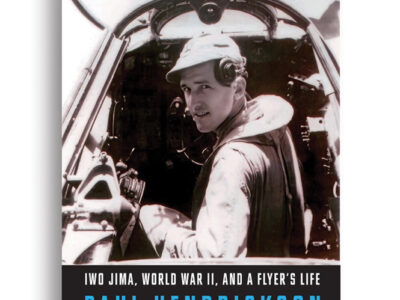Galloping toward civil war.

By David E. Hooper | Reading John Eisenberg’s The Great Match Race: When North Met South in America’s First Sports Spectacle rekindled many memories of the 41 renewals of the Kentucky Derby that I have covered as a member of the Derby press corps since 1965. Chapter by chapter, Eisenberg builds the story of the Great Match Race so that, during the final days leading up to the May 1823 event, it reaches a crescendo not unlike the buildup to a “Derby Fever” pitch.
But the Great Match Race, which was eventually held at the Union Course on Long Island, is much more. Eisenberg’s exhaustive research has produced a work of riveting history that melds 19th-century politics, the perennial competitiveness of sporting men, and the significant differences between North and South that ultimately culminated in the Civil War, less than 40 years after the race was run.
One paragraph eloquently captures the state of the Union:
But the main reason the Union Course race became America’s first major sports event was the fundamental allure of a contest that people on both sides had become emotionally invested in. Just as sports spectacles in ancient Greece, Rome, and England served as substitutes for real war, with rivals battling symbolically rather than with weapons and blood, the Union Course race pitted one American region against another, one way of life against the other. Slaveholders against slave opponents. Planters against industrialists. Each saw its side as superior and saw the race as a chance to emphasize that superiority.
The North was represented by Eclipse; the South by Henry. The two thoroughbreds reached the starting point after going through very different training methods.
And this wasn’t just any race. The Great Match Race involved a series of three 4-mile races, with the winner required to finish first twice. Furthermore, each race began only a half-hour after the previous one. Three races totaling 12 miles proved a supreme test of a horse’s stamina. In the Triple Crown races, the 1-mile distance of the Kentucky Derby, the 1 3/16-mile route of the Preakness Stakes, and the 1 miles of the Belmont Stakes are the longest distances most North American horses are ever asked to run. And those horses have two weeks, then three weeks, respectively, to rest between those races.
Eclipse came to the Great Match Race undefeated in seven starts, having most recently defeated an injured Sir Charles in a mismatch of a race involving horses from the North and South run the previous fall. Eclipse’s owner-trainer, Cornelius Van Ranst, had to respect the horse’s advanced age as he prepared the 9-year-old through the winter and spring for the most challenging test of his career.
William Ransom Johnson, the trainer of Henry, was known as the Napoleon of Southern horsemen because his horses were so dominant. But he had a significantly different challenge than Van Ranst. By terms of the Great Match Race, agreed to shortly after Eclipse disposed of Sir Charles, Johnson could search far and wide for an equestrian representative of the South, and he began doing so six months prior to the race. His eventual choices were debated by his Southern peers as vigorously as any such decisions are today.
Eisenberg provides an enthralling description of Johnson’s rationale for deciding how he would select the five horses he thought could go through five months of rigorous training to give the South its best chance to defeat the champion of the North. Henry, not yet four years, became the choice only in the last month before the Great Match Race, during which time he began responding positively to the commands of his rider and trainer.
The Union Course had provided legal racing in New York only under the most stringent conditions during the previous two years. “New York State banned it in 1802 because of what one newspaper later termed ‘intoxication, riot, and lewdness’ at local tracks,” Eisenberg writes. “The ban would remain in effect for nineteen years.”
But most politicians of the early 1800s were apparently not worried that their association with racing would sully their reputations. “So many congressmen and senators had come up from Washington [on race day] that a roll-call vote could have been taken,” Eisenberg writes.
In the end, Johnson, who had spent months preparing his horses for the Great Match Race, was unable to be among the throng of 60,000. After all his meticulous planning, he could only hear the roar of the crowd and guess at the outcome of each heat while he lay writhing on his bed. A bad lobster at the pre-race banquet the night before had rendered him helpless.
The Great Match Race went three spellbinding heats and had all the elements of a great race. The respective camps plotted strategy before each heat, and late jockey-changes added to the suspense of the decisive third heat.
Odds are, you’ll want to read The Great Match Race to find out who won.
David Hooper C’61 has worked in the pari-mutuel horse-racing industry for 45 years in a wide range of capacities. For the past nine years he has served as executive director of the Texas Thoroughbred Association.




